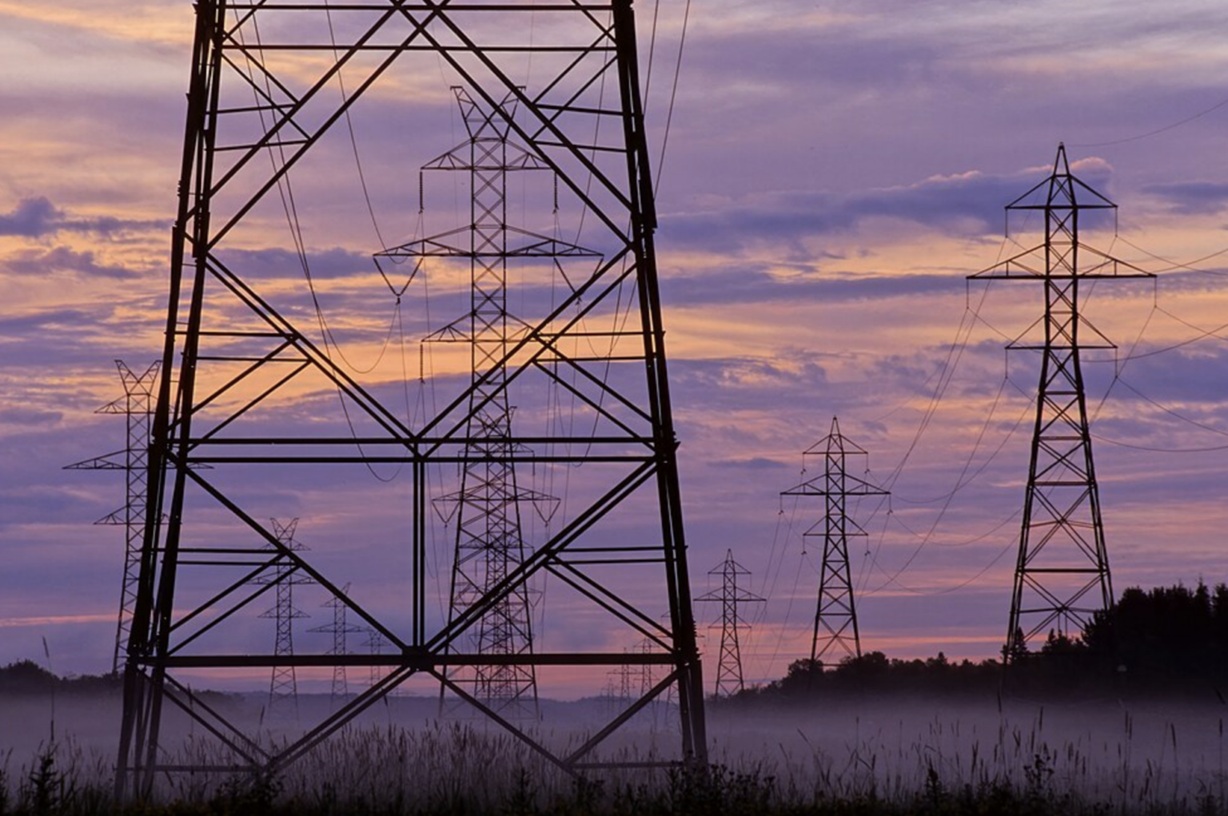Georgia wetland not federally protected, court rules – AJC.com

Judicial Ruling on Sea Island Wetland Impacts Sustainable Development Goals
Executive Summary
A ruling by the 11th U.S. Circuit Court of Appeals has determined that a half-acre wetland on Sea Island, Georgia, does not qualify for protection under the federal Clean Water Act. This decision, which upholds a lower court’s dismissal of a complaint by environmental groups, sets a significant legal precedent for Georgia, Florida, and Alabama. The ruling narrows the scope of federal environmental protection and has direct implications for the achievement of several United Nations Sustainable Development Goals (SDGs), particularly those concerning water, ecosystems, and institutional justice.
Case Background and Legal Precedent
The legal challenge originated from actions taken by Sea Island following the issuance of a permit in 2013 by the U.S. Army Corps of Engineers and the Georgia Environmental Protection Division.
- Sea Island was granted permission to fill the wetland to construct an office building and parking lot.
- Court records indicate the company subsequently covered the wetland area with sod.
- Environmental stakeholders filed a complaint, alleging the filling of the wetland was an illegal violation of the Clean Water Act.
The court’s decision rested on the 2023 Supreme Court ruling in Sackett v. EPA, which established a stringent test for federal wetland protection.
- The Sackett ruling mandates that a wetland must have a “continuous surface connection” to a protected body of water to be considered “waters of the United States.”
- The 11th Circuit found that the plaintiffs failed to demonstrate such a connection between the Sea Island wetland and the nearby Dunbar Creek.
- The court noted that maps showed upland areas, roads, and a median separating the wetland from the creek, and that the presence of pipes or culverts did not sufficiently prove a continuous connection.
Implications for Sustainable Development Goals (SDGs)
SDG 6: Clean Water and Sanitation & SDG 14: Life Below Water
The ruling presents a significant challenge to the advancement of water and marine ecosystem protection goals. Wetlands are critical natural infrastructure for achieving SDG 6 (Target 6.6: Protect and restore water-related ecosystems) and SDG 14 (Target 14.2: Protect and restore marine and coastal ecosystems).
- Reduced Water Quality Protection: By narrowing the legal definition of protected wetlands, the decision limits the Clean Water Act’s effectiveness in preventing pollution and protecting water quality, which is central to SDG Target 6.3.
- Threat to Coastal and Marine Health: Wetlands serve as natural filters, preventing pollutants from entering larger waterways like Dunbar Creek and ultimately the ocean. Their degradation compromises the health of coastal ecosystems, directly impacting efforts under SDG 14.
SDG 15: Life on Land
The decision directly affects the conservation of terrestrial and freshwater ecosystems as outlined in SDG 15.
- Habitat and Biodiversity Loss: The ruling facilitates the destruction of a vital wetland habitat, contributing to the degradation of natural habitats and the loss of biodiversity (SDG Target 15.5).
- Erosion of Ecosystem Services: The loss of this wetland, and the precedent it sets for others, diminishes crucial ecosystem services such as flood control and water purification, undermining the goal of conserving and restoring inland freshwater ecosystems (SDG Target 15.1).
SDG 16: Peace, Justice and Strong Institutions
The case highlights the role of judicial interpretation in shaping environmental governance and the strength of institutions tasked with protecting natural resources.
- Impact on Environmental Law: The ruling provides a clear, albeit restrictive, interpretation of the Sackett precedent, creating binding legal guidance that could weaken institutional capacity for environmental protection across three states.
- Access to Justice: While providing legal clarity for landowners, the decision narrows the avenues for environmental stakeholders to seek legal recourse to protect vital ecosystems, affecting the principle of responsive and inclusive decision-making (SDG Target 16.7).
Conclusion and Outlook
The 11th Circuit’s decision provides landowners and regulators with a distinct framework for applying the Supreme Court’s test for wetland protection. However, this clarity comes at the cost of reduced environmental safeguards, posing a direct conflict with the objectives of SDGs 6, 14, and 15. The precedent may influence the formulation of future federal environmental rules. Environmental stakeholders retain the option to petition the 11th Circuit for a reconsideration or to seek a review by the Supreme Court, leaving the ultimate fate of this and similar wetlands subject to further legal contestation.
Analysis of SDGs, Targets, and Indicators
1. Which SDGs are addressed or connected to the issues highlighted in the article?
-
SDG 6: Clean Water and Sanitation
The article’s central theme is the legal protection of a wetland under the Clean Water Act. Wetlands are critical water-related ecosystems, and the court case directly addresses the scope of legislation designed to protect water quality and resources.
-
SDG 14: Life Below Water
The case takes place on Sea Island, Georgia, and involves a “salt marsh” and “Dunbar Creek.” These are coastal ecosystems. The legal precedent set by the 11th Circuit is binding in coastal states (Georgia, Florida, Alabama), impacting the management and protection of marine and coastal ecosystems.
-
SDG 15: Life on Land
The article focuses on the fate of a wetland, which is a key type of terrestrial and inland freshwater ecosystem. The decision to allow the filling of the wetland for development directly relates to the conservation and degradation of natural habitats on land.
-
SDG 16: Peace, Justice and Strong Institutions
The entire narrative is framed around a legal dispute. It details a lawsuit brought by environmentalists, court proceedings in the 11th Circuit, and the application of a Supreme Court precedent (the Sackett ruling). This highlights the role of legal institutions and laws like the Clean Water Act in environmental governance and access to justice.
2. What specific targets under those SDGs can be identified based on the article’s content?
-
SDG 6: Clean Water and Sanitation
- Target 6.6: By 2020, protect and restore water-related ecosystems, including mountains, forests, wetlands, rivers, aquifers and lakes.
Explanation: The article is about a legal battle over the protection of a “half acre of wetland.” The court’s decision, which finds the wetland is not protected under the Clean Water Act, represents a direct challenge to the goal of protecting such ecosystems.
- Target 6.6: By 2020, protect and restore water-related ecosystems, including mountains, forests, wetlands, rivers, aquifers and lakes.
-
SDG 14: Life Below Water
- Target 14.2: By 2020, sustainably manage and protect marine and coastal ecosystems to avoid significant adverse impacts… and take action for their restoration.
Explanation: The case concerns a wetland near a “salt marsh” and “Dunbar Creek” on Sea Island. The ruling weakens the legal framework for protecting such coastal ecosystems from development (“Sea Island sought and was granted permission to fill its wetland… to construct a new office building and parking lot”), which is a setback for this target.
- Target 14.2: By 2020, sustainably manage and protect marine and coastal ecosystems to avoid significant adverse impacts… and take action for their restoration.
-
SDG 15: Life on Land
- Target 15.1: By 2020, ensure the conservation, restoration and sustainable use of terrestrial and inland freshwater ecosystems and their services, in particular forests, wetlands…
Explanation: The article describes the opposite of conservation; Sea Island “covered the half acre of wetland with sodding” after getting permission to fill it, directly impacting an inland freshwater ecosystem. - Target 15.5: Take urgent and significant action to reduce the degradation of natural habitats…
Explanation: The filling of the wetland is a clear example of the “degradation of natural habitats.” The court’s ruling facilitates this degradation by narrowing the legal protections available.
- Target 15.1: By 2020, ensure the conservation, restoration and sustainable use of terrestrial and inland freshwater ecosystems and their services, in particular forests, wetlands…
-
SDG 16: Peace, Justice and Strong Institutions
- Target 16.3: Promote the rule of law at the national and international levels and ensure equal access to justice for all.
Explanation: The article details how environmental laws are being interpreted and applied. The case shows environmentalists using the legal system to challenge an action they believe is illegal (“environmentalists alleged Sea Island illegally filled the wetland in violation of its permit and the Clean Water Act”). The outcome, based on the “Supreme Court’s Sackett test,” demonstrates the critical role of judicial interpretation in defining the “rule of law” for environmental protection.
- Target 16.3: Promote the rule of law at the national and international levels and ensure equal access to justice for all.
3. Are there any indicators mentioned or implied in the article that can be used to measure progress towards the identified targets?
-
For Targets 6.6 and 15.1:
- Indicator: Extent of water-related/freshwater ecosystems.
Explanation: The article provides a specific measurement of the wetland that was filled: “the half acre of wetland.” This quantifies the area of the ecosystem that has been lost or degraded, serving as a direct indicator of a negative change in the extent of protected wetlands.
- Indicator: Extent of water-related/freshwater ecosystems.
-
For Target 15.5:
- Indicator: Actions leading to habitat degradation.
Explanation: The article explicitly states the action taken: Sea Island “covered the half acre of wetland with sodding” to “construct a new office building and parking lot.” This serves as a qualitative indicator of habitat degradation driven by development.
- Indicator: Actions leading to habitat degradation.
-
For Target 16.3:
- Indicator: Application of national environmental legislation.
Explanation: The article’s core is the application and interpretation of the “Clean Water Act.” The reference to the “Supreme Court’s 2023 decision in a separate case, known as the Sackett ruling,” and its use by the 11th Circuit to dismiss the environmentalists’ complaint serves as an indicator of how the national legal framework for environmental protection is being narrowed and implemented.
- Indicator: Application of national environmental legislation.
4. Summary Table of SDGs, Targets, and Indicators
| SDGs | Targets | Indicators |
|---|---|---|
| SDG 6: Clean Water and Sanitation | 6.6: Protect and restore water-related ecosystems, including… wetlands… | The specific area of ecosystem lost (“half acre of wetland”). |
| SDG 14: Life Below Water | 14.2: Sustainably manage and protect marine and coastal ecosystems to avoid significant adverse impacts… | The legal precedent (11th Circuit ruling) weakening protection for coastal ecosystems (wetlands near salt marshes/creeks). |
| SDG 15: Life on Land | 15.1: Ensure the conservation, restoration and sustainable use of… wetlands… | The loss of a “half acre of wetland” to development (office building and parking lot). |
| 15.5: Take urgent and significant action to reduce the degradation of natural habitats… | The specific action of habitat degradation (“covered the half acre of wetland with sodding”). | |
| SDG 16: Peace, Justice and Strong Institutions | 16.3: Promote the rule of law… and ensure equal access to justice… | The application and narrowing of national environmental law (“Clean Water Act”) based on a new judicial precedent (“Sackett ruling”). |
Source: ajc.com

What is Your Reaction?
 Like
0
Like
0
 Dislike
0
Dislike
0
 Love
0
Love
0
 Funny
0
Funny
0
 Angry
0
Angry
0
 Sad
0
Sad
0
 Wow
0
Wow
0

























_1.png?#)




















































